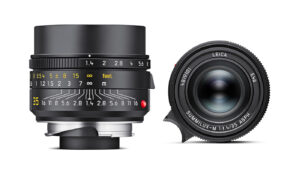In the world of marketing, data is king. Whether you’re launching a new product, refining your messaging, or expanding into new markets, understanding your target audience is crucial. Market research provides the insights necessary to make informed decisions, ensuring that your strategies align with the needs, desires, and behaviors of your customers. But not all market research is created equal. There are two primary types of market research: qualitative and quantitative. Each plays a unique role in understanding the market and shaping your strategies. In this article, we’ll dive deep into the differences between qualitative and quantitative market research, their processes, the importance of asking the right questions, and why market research is essential for creating a market-centric approach.
Understanding Qualitative Market Research
Qualitative market research is all about depth. It’s an exploratory research method used to gain an understanding of underlying reasons, opinions, and motivations. This type of research focuses on the “why” behind consumer behavior and is often used to uncover trends in thoughts and opinions, diving deep into the psyche of the consumer.
The Process of Qualitative Research
The qualitative research process typically involves methods such as focus groups, in-depth interviews, and ethnographic research. These methods allow researchers to collect data in a more unstructured way, providing rich, detailed insights.
- Focus Groups: These are small groups of people (usually 6-10) who are brought together to discuss a product, service, or concept. A moderator leads the discussion, encouraging participants to share their thoughts and feelings openly. The goal is to uncover deep insights that can’t be captured through surveys or other quantitative methods.
- In-Depth Interviews: These one-on-one interviews are designed to dig deeper into individual experiences and opinions. Interviews are typically semi-structured, allowing the interviewer to explore specific topics while also following the conversation wherever it leads.
- Ethnographic Research: This method involves observing consumers in their natural environment. It’s a way to see how people interact with products and services in real life, providing a more authentic view of their behavior and decision-making processes.
Audience Size and Data Analysis
Unlike quantitative research, which focuses on large sample sizes, qualitative research often involves smaller, more targeted groups. The goal is not to generalize findings across a large population but to gain a deep understanding of a specific group’s behaviors and attitudes.
The data collected in qualitative research is non-numerical and often subjective. Researchers analyze the data by identifying patterns and themes, creating a narrative that explains the underlying motivations and beliefs of the target audience.
Understanding Quantitative Market Research
Quantitative market research, on the other hand, is all about numbers. It’s used to quantify behaviors, opinions, and attitudes and to generalize results from a larger sample population. This type of research is focused on the “what,” “how many,” and “how often” of consumer behavior.
The Process of Quantitative Research
The process of quantitative research involves structured methods such as surveys, questionnaires, and statistical analysis. The goal is to collect measurable data that can be used to identify patterns and predict future behaviors.
- Surveys and Questionnaires: These are the most common methods used in quantitative research. Surveys can be conducted online, by phone, or in person, and they typically involve a series of closed-ended questions that can be easily quantified. The data collected is then analyzed using statistical methods to identify trends and correlations.
- Statistical Analysis: Once the data is collected, it’s analyzed using various statistical techniques. This might involve calculating averages, percentages, or correlations to draw conclusions about the broader population.
Audience Size and Data Analysis
Quantitative research typically involves larger sample sizes, often in the hundreds or thousands. The larger the sample size, the more accurate the results are likely to be. This is because quantitative research aims to generalize findings across a broader population, making it important to have a sample that is representative of that population.
The data collected in quantitative research is numerical and objective. It’s analyzed using statistical methods to identify patterns and trends, providing a more generalizable view of consumer behavior.
Asking the Right Questions in Market Research
Whether you’re conducting qualitative or quantitative research, one thing is clear: asking the right questions is crucial. The questions you ask will determine the quality of the insights you gain. Poorly framed questions can lead to misleading data, which in turn can result in poor decision-making.
In qualitative research, open-ended questions are key. These types of questions encourage participants to share their thoughts and feelings in their own words, providing richer, more nuanced data. For example, instead of asking, “Do you like this product?” (which might only elicit a yes or no response), you might ask, “What do you like or dislike about this product?”
In quantitative research, the focus is on creating clear, unbiased, and measurable questions. It’s important to avoid leading questions, which can skew the results. For example, instead of asking, “Don’t you think this product is great?” (which suggests a positive answer), you might ask, “How would you rate your satisfaction with this product on a scale of 1 to 10?”
The Importance of Market Research in Becoming Market-Centric
In today’s highly competitive marketplace, being market-centric is not just a nice-to-have; it’s a necessity. A market-centric organization puts the customer at the center of everything it does, from product development to marketing and sales strategies. But becoming market-centric doesn’t happen by accident. It requires a deep understanding of your customers, and that’s where market research comes in.
Market research provides the data and insights needed to understand who your customers are, what they want, and how they behave. It helps you identify the needs and pain points of your target audience, allowing you to develop products and services that truly meet those needs. Without this data, you’re flying blind, relying on guesswork and gut feelings, which can lead to costly mistakes.
Gut Feelings vs. Data-Driven Decisions
It’s tempting to rely on gut feelings when making decisions, especially if you’ve been in the industry for a long time and feel like you know your market well. But gut feelings are often based on incomplete or outdated information. In contrast, market research provides a more reliable and accurate picture of the market.
Data-driven decisions are based on evidence, not intuition. They allow you to make informed choices that are more likely to lead to success. For example, rather than launching a new product because you think it will be popular, you can use market research to test the concept, gather feedback, and make adjustments before going to market.
Market Research and Product Development
Market research plays a vital role in product development. It helps you understand what features and benefits your target audience values most, allowing you to prioritize those elements in your product design. It also helps you identify potential challenges or barriers to adoption, so you can address them early in the development process.
For example, let’s say you’re developing a new software product. Through qualitative research, you might discover that your target audience is frustrated with the complexity of existing products on the market. This insight can lead you to focus on creating a user-friendly interface that addresses this pain point.
Quantitative research can then be used to test your product with a larger audience, gathering feedback on specific features and identifying any areas for improvement. By combining qualitative and quantitative research, you can develop a product that not only meets but exceeds the expectations of your target audience.
Designing Communication Campaigns with Market Research
In addition to product development, market research is also essential for designing effective communication campaigns. It helps you understand how your target audience consumes information, what messages resonate with them, and which channels they prefer.
For example, through qualitative research, you might discover that your target audience values authenticity and transparency in marketing messages. This insight can guide the tone and content of your campaigns, helping you build trust with your audience.
Quantitative research can then be used to measure the effectiveness of your campaigns, tracking key metrics such as brand awareness, engagement, and conversion rates. This data allows you to refine your strategies over time, ensuring that your campaigns continue to deliver results.
Identifying Your Most Valuable Target Audience
One of the most important outcomes of market research is the ability to identify your most valuable target audience. Not all customers are created equal, and understanding who represents the best opportunities for your business is key to maximizing your return on investment.
Market research helps you segment your audience based on factors such as demographics, psychographics, and behavior. This allows you to tailor your marketing efforts to the needs and preferences of each segment, increasing the likelihood of success.
For example, if your research reveals that a particular demographic group is more likely to purchase your product, you can focus your marketing efforts on reaching that group. By targeting your most valuable audience, you can achieve better results with fewer resources.
Conclusion: The Power of Market Research
In today’s data-driven world, market research is not just a tool; it’s a necessity. Whether you’re conducting qualitative or quantitative research, the insights you gain are invaluable in shaping your strategies and making informed decisions. By asking the right questions and using data to guide your decisions, you can create products, services, and campaigns that truly resonate with your target audience.
Becoming market-centric means putting the customer at the heart of everything you do, and that starts with understanding who they are, what they want, and how they behave. Market research provides the foundation for this understanding, helping you move beyond gut feelings and assumptions to make data-driven decisions that drive success.
In short, market research is the key to unlocking the full potential of your business. Without it, you’re operating in the dark, but with it, you have the power to create strategies that are not only effective but also sustainable in the long term. So, invest in market research, ask the right questions, and let data guide your path to success.








































































